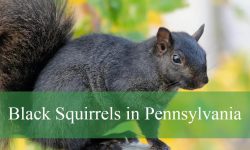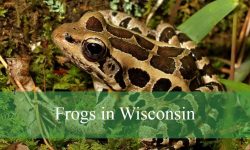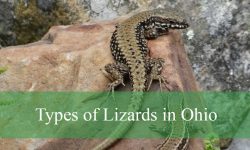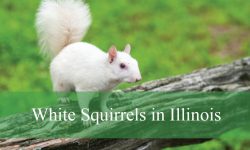Nevada’s deserts and valleys are alive with an incredible variety of insects, some harmless and others quite dangerous. While most bugs are essential to the balance of nature, a few can deliver painful stings, venomous bites, or trigger allergic reactions.
From spiders hiding under rocks to wasps defending their nests, many of these creatures thrive in the state’s warm and dry climate. Their presence reminds us that even the harshest landscapes are full of life, often with surprising defenses.
This guide to 22 dangerous bugs in Nevada will help you recognize and understand the species that can cause harm. With clear identification tips, behavior details, and safety advice, you can enjoy the outdoors while avoiding unpleasant encounters.
Types of Dangerous Bugs Found in Nevada
Velvet Ant (Dasymutilla occidentalis)
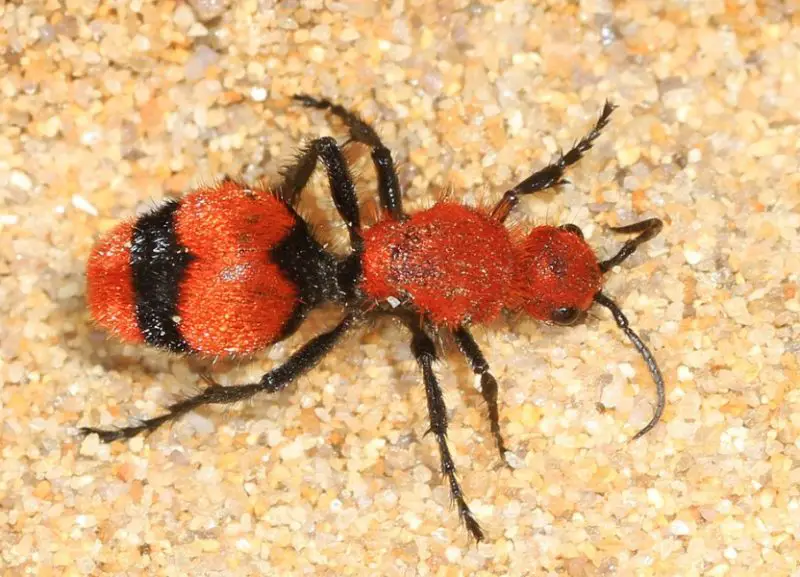
The Velvet Ant, commonly known as the “cow killer ant,” is actually a species of wingless wasp found throughout Nevada’s dry, sandy regions. Females are covered in bright red and black dense hairs, making them highly visible against desert soils. Their bold coloration serves as a warning to predators, as this species is not only venomous but also incredibly tough, capable of surviving extreme heat and dryness. Males, on the other hand, have wings and are less often seen crawling on the ground.
Adult females can grow up to 0.75 inches (2 cm) long, with a stout, fuzzy body that makes them appear almost cute—until they sting. The males are slightly larger but harmless since only females possess a functional stinger. Velvet Ants are solitary, meaning they don’t live in colonies like true ants or hornets. Instead, the females spend most of their time searching for ground-nesting bees or wasps, into whose burrows they lay eggs.
Behaviorally, Velvet Ants are fast-moving and highly defensive when threatened. They produce a loud squeaking sound when handled and can deliver an extremely painful sting that ranks among the most intense in North America. Despite the nickname “cow killer,” their sting is not fatal but can cause burning pain, swelling, and tenderness lasting for hours.
These insects inhabit open, arid environments—deserts, scrublands, and sandy meadows—where solitary bees are common. They are rarely seen indoors and pose minimal danger if left undisturbed. However, stepping on one barefoot in the Nevada desert can result in an unforgettable sting, so caution is advised when exploring sandy trails.
Black Widow Spider (Latrodectus mactans)
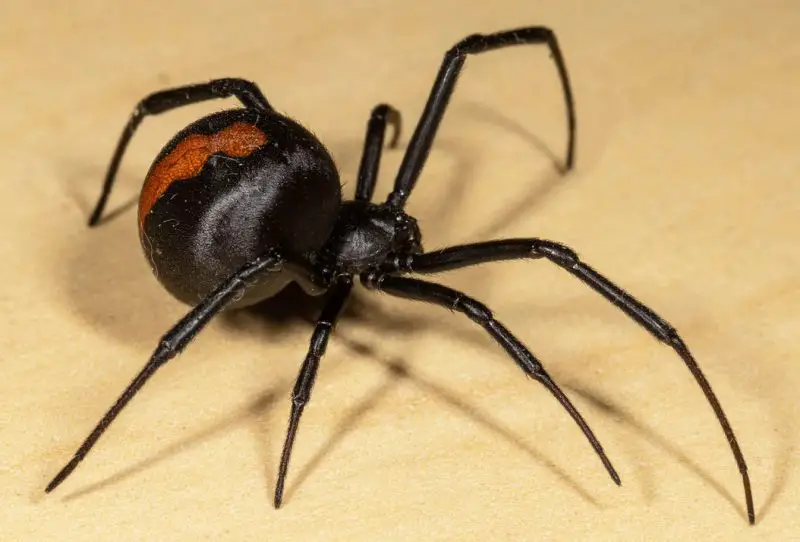
The Black Widow Spider is one of the most notorious venomous arachnids in Nevada. It is easily recognized by its shiny black body and the distinct red hourglass marking on the underside of its abdomen. Females, which are the venomous ones, grow to about 1.5 inches (3.8 cm) including their leg span, while males are much smaller and lighter in color. Their webs are irregular, sticky, and typically constructed in dark, undisturbed locations such as woodpiles, sheds, or under outdoor furniture.
The venom of the Black Widow is a neurotoxin that affects the nervous system. A bite often feels like a sharp pinprick, followed by pain that spreads through the body, leading to muscle cramps, nausea, and sweating. In rare cases, severe reactions can occur, particularly in young children, the elderly, or individuals with compromised immune systems. Despite their fearsome reputation, fatalities are extremely rare thanks to modern medical care.
Black Widows are generally shy and non-aggressive, biting only when threatened or accidentally pressed against the skin. Their nocturnal habits mean they are most active at night, hunting small insects that become trapped in their sticky webs. They prefer warm climates, which makes Nevada’s dry deserts and valleys ideal habitats.
These spiders are found across the state, from the outskirts of Las Vegas to rural farmlands. Homeowners should exercise caution when reaching into dark corners or outdoor storage areas. Wearing gloves and shaking out clothing or shoes before use can greatly reduce the risk of bites.
Brown Recluse Spider (Loxosceles reclusa)

The Brown Recluse Spider is one of the most feared spiders in the United States, though it is less common in Nevada than in the Midwest. It can be identified by its light to dark brown coloration and the distinctive violin-shaped marking on its back, pointing toward the abdomen. Adult recluses measure about 0.5 inches (1.3 cm) in body length, with long, slender legs that give them a spindly appearance.
Unlike many other spiders, the Brown Recluse has only six eyes arranged in pairs rather than the usual eight. They build irregular webs but are not web-dependent hunters; instead, they roam at night searching for small insects. During the day, they hide in dark, secluded places such as basements, storage boxes, and closets—hence their name “recluse.”
The venom of a Brown Recluse contains necrotic toxins that destroy tissue around the bite area. The initial bite may go unnoticed but can later develop into a painful ulcer or lesion surrounded by reddened, dying skin. Severe cases can take weeks to heal and occasionally require surgical intervention. However, not all bites result in necrosis, and fatalities are exceedingly rare.
In Nevada, reports of Brown Recluse bites are often overestimated due to confusion with similar-looking species. Still, they may be found in imported materials or storage areas where temperatures remain moderate. Preventing clutter and sealing cracks around the home can help reduce the likelihood of encounters.
Eastern Yellowjacket (Vespula maculifrons)
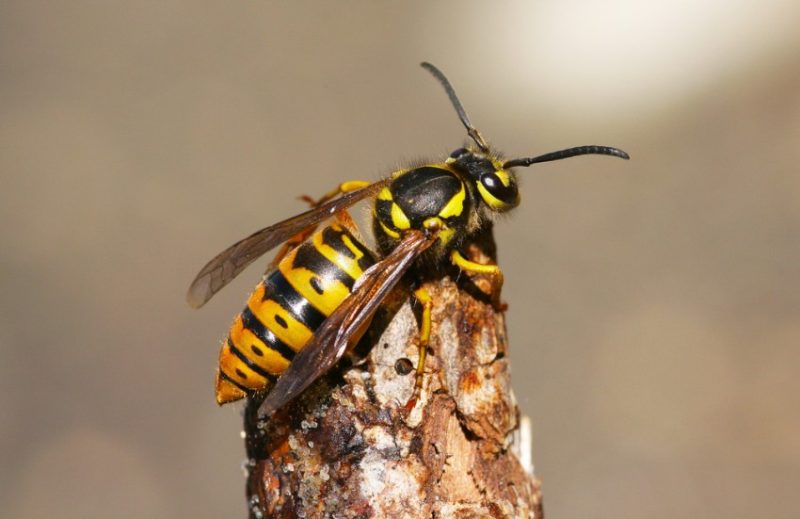
The Eastern Yellowjacket is a highly aggressive wasp species that can be found in parts of Nevada, especially around human settlements where food waste is abundant. These wasps are small—typically about 0.5 inches (1.2 cm) long—with bright yellow and black bands and a smooth, shiny body. They are often mistaken for bees, but unlike bees, they can sting multiple times without losing their stinger.
Yellowjackets are social insects that build paper-like nests underground, in hollow trees, or inside wall cavities. Colonies can contain thousands of workers during peak summer months. They are particularly attracted to sugary drinks, meats, and garbage, making them common at outdoor picnics, campsites, and urban trash bins. When disturbed, they defend their nests aggressively and will pursue intruders for several meters.
Their venom is primarily composed of proteins that cause pain, itching, and swelling at the sting site. For most people, the effects subside after a few hours, but for those allergic to wasp venom, a single sting can trigger anaphylaxis, a potentially life-threatening reaction requiring immediate medical care. Multiple stings can also be dangerous due to cumulative venom effects.
In Nevada, Yellowjackets thrive in urban and suburban environments as well as in parks and rural farmlands. Keeping food covered outdoors, sealing trash bins, and avoiding rapid movements near their nests are effective ways to minimize risk. Professional pest control may be necessary to remove large colonies safely.
European Hornet (Vespa crabro)

The European Hornet is the largest true hornet found in North America and, while less common in Nevada, can still appear in wooded and suburban areas. Adults measure between 1 and 1.5 inches (2.5–3.8 cm) long, with reddish-brown heads, yellow-striped abdomens, and transparent wings. Despite their intimidating appearance, European Hornets are generally less aggressive than Yellowjackets unless their nests are threatened.
These hornets build large paper nests, often located in hollow trees, wall cavities, or attics. The nests can house several hundred individuals by late summer. Workers are active during both day and night, hunting other insects such as flies, caterpillars, and grasshoppers to feed their larvae. They play a small ecological role in controlling pest populations, although their defensive nature near nests can pose danger to humans.
The sting of a European Hornet is painful due to the amount of venom injected, which can cause redness, swelling, and burning sensations lasting several hours. While their venom is not more toxic than that of bees or wasps, their larger size means they can deliver more venom per sting. Multiple stings or allergic reactions can be serious and require medical attention.
In Nevada, they are most often encountered near wooded regions, orchards, and older buildings. They are attracted to lights at night and may buzz around porches or windows. People should avoid swatting at them, as sudden movements can provoke stings. If a nest is found close to human dwellings, it is best handled by a professional exterminator.
Paper Wasp (Polistes spp.)
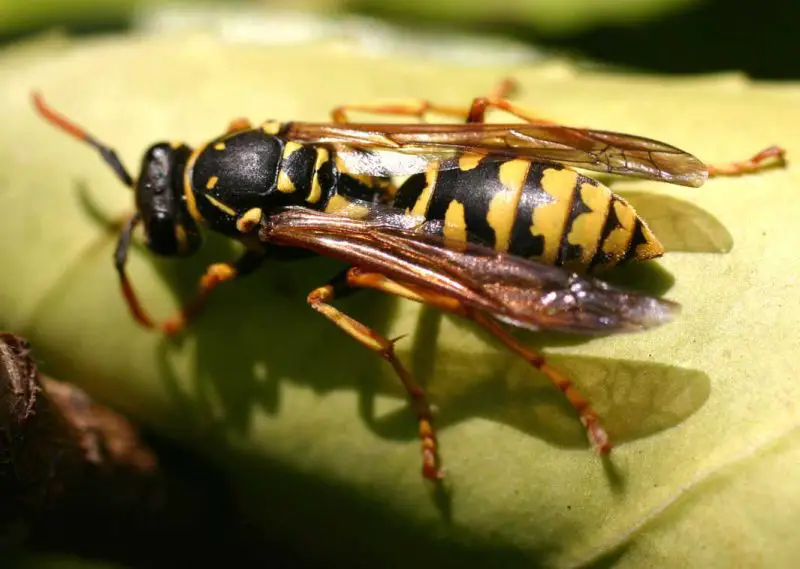
Paper Wasps are easily recognizable insects commonly found throughout Nevada. They are slender, medium-sized wasps—typically about 0.75 to 1 inch (2–2.5 cm) long—with narrow waists, long legs, and reddish-brown or black bodies marked with yellow. Their most distinguishing feature is their open, umbrella-shaped nest, made from chewed wood fibers mixed with saliva. These nests are often found hanging from eaves, porch ceilings, or tree branches.
Paper Wasps are social insects, living in small colonies typically containing one queen and several workers. They feed on caterpillars, flies, and other soft-bodied insects, making them beneficial for natural pest control. However, they become highly defensive when their nest is threatened and will swarm intruders with repeated stings. Unlike honeybees, Paper Wasps can sting multiple times since their stingers are smooth.
The sting of a Paper Wasp causes intense pain, redness, and swelling at the sting site. Most reactions are mild, but some individuals can develop allergic symptoms such as dizziness, difficulty breathing, or hives. For people with insect venom allergies, even a single sting can result in anaphylactic shock.
Paper Wasps thrive in Nevada’s warm, dry climate, building nests in both urban and rural environments. They often return to the same nesting sites year after year. To reduce risks, residents should inspect outdoor areas regularly, especially during spring, and remove small nests early in the season before colonies expand.
Fire Ant (Solenopsis invicta)
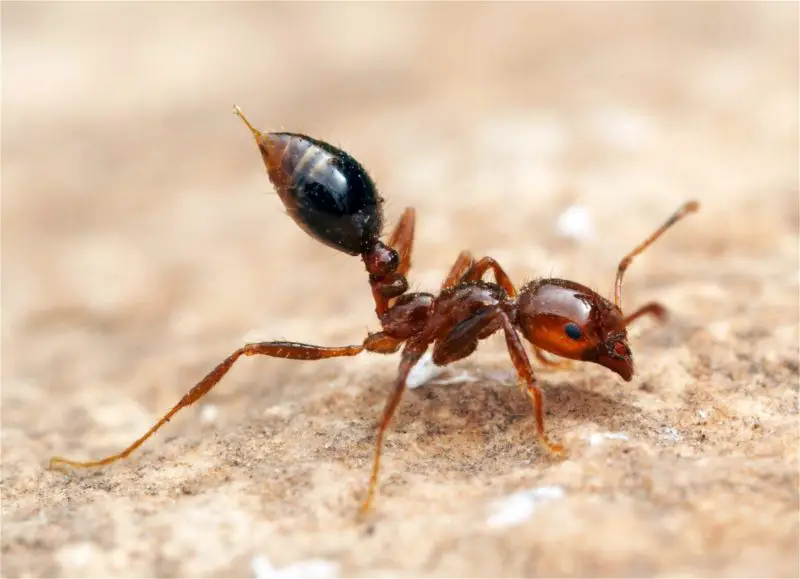
Fire Ants are notorious for their aggressive behavior and painful, burning stings. These reddish-brown ants range from 0.06 to 0.25 inches (1.6–6 mm) in size and typically form large, dome-shaped mounds that can reach up to 18 inches (45 cm) tall. In Nevada, they are most frequently encountered in disturbed areas such as lawns, fields, and near roadsides, particularly in the southern parts of the state.
When their mound is disturbed, Fire Ants swarm rapidly, climbing and stinging anything that moves. Their sting injects venom containing alkaloids that produce a burning sensation followed by the formation of white pustules within 24 hours. Multiple stings can result in severe itching, swelling, and secondary infections if scratched. In sensitive individuals, the venom can cause systemic allergic reactions or even anaphylaxis.
Fire Ants are highly social insects with colonies containing hundreds of thousands of workers and one or more queens. They are omnivorous, feeding on plants, dead insects, and small animals. Their aggressive nature allows them to outcompete native ant species and spread rapidly.
Because they are both invasive and dangerous, Fire Ants are considered a significant pest in the southern United States. In Nevada, control involves baiting and mound treatments. People should avoid walking barefoot on infested lawns or disturbing mounds directly. Early identification and professional management are key to preventing painful encounters.
Cicada Killer Wasp (Sphecius speciosus)
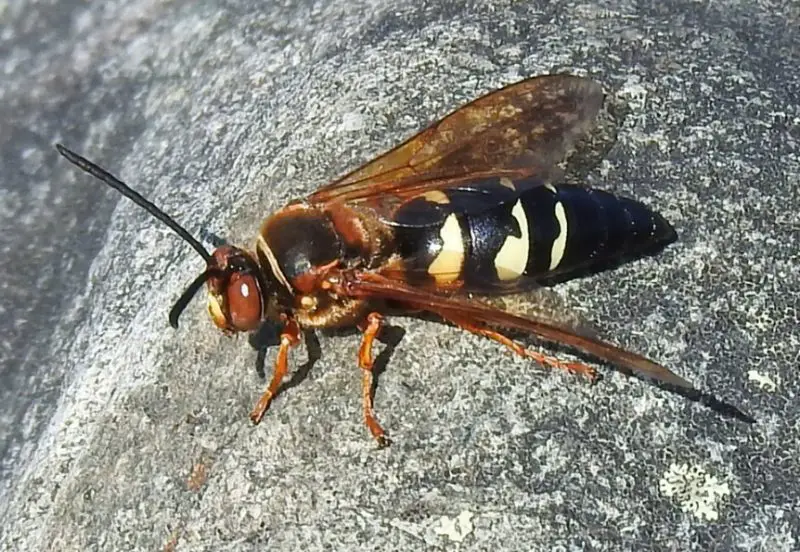
The Cicada Killer Wasp is one of the largest wasps in North America and can appear intimidating due to its size and loud buzzing. Females can reach up to 2 inches (5 cm) long and have black bodies with yellow markings and reddish wings. Despite their fearsome appearance, these wasps are generally not aggressive toward humans unless provoked. They are solitary insects, unlike hornets or yellowjackets.
Their name comes from their hunting behavior—female Cicada Killers paralyze cicadas with their sting and transport them into underground burrows to feed their larvae. Males, which lack stingers, are territorial and often buzz around humans or animals who enter their area, but their threats are harmless displays. These wasps prefer sandy soils where they can dig tunnels easily, making Nevada’s desert landscapes ideal for nesting.
A sting from a female Cicada Killer is painful but usually not dangerous unless the person is allergic. The venom’s primary function is to paralyze prey, not to defend the nest. Most people experience short-lived pain, mild swelling, and redness that subsides within a few hours.
Cicada Killers are beneficial insects that help control cicada populations. They can often be seen in late summer when cicadas are active. To minimize encounters, avoid disturbing nesting areas and observe these fascinating predators from a distance.
Southern Devil Scorpion (Vaejovis carolinianus)
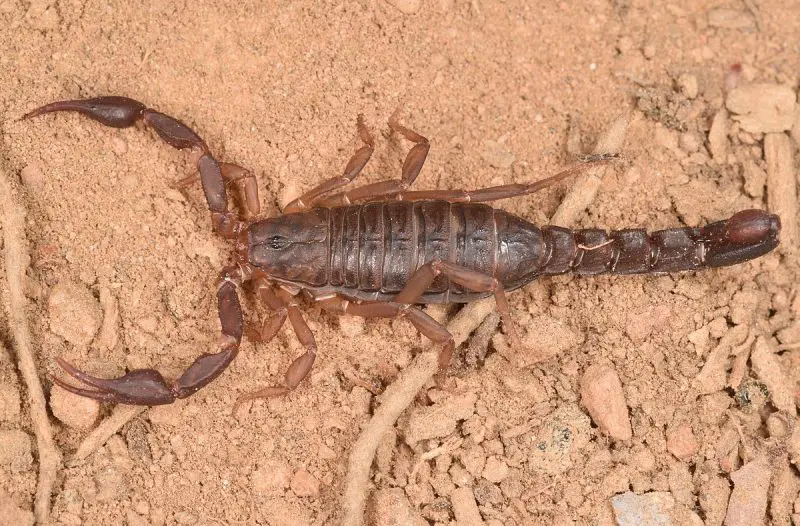
The Southern Devil Scorpion is a small but striking arachnid found in parts of southern Nevada, especially in rocky hillsides and wooded habitats. Adults typically measure about 1 to 2 inches (2.5–5 cm) long and have brown or reddish-brown bodies with segmented tails ending in a venomous stinger. Despite their fearsome appearance, these scorpions are not aggressive and usually sting only when handled or accidentally pressed against the skin.
This species is nocturnal, spending daylight hours hiding under rocks, logs, and leaf litter to avoid the desert heat. At night, it hunts insects, spiders, and other small invertebrates, using its pincers to grab prey and inject venom to immobilize it. The venom contains mild neurotoxins that are potent against insects but cause only localized pain in humans.
A sting from a Southern Devil Scorpion feels similar to a bee sting—sharp and painful, followed by redness and slight swelling. In rare cases, sensitive individuals may experience allergic reactions, numbness, or dizziness, but the venom is not lethal to humans. Most symptoms disappear within 30 minutes to a few hours.
Southern Devil Scorpions are native to the southeastern United States but have established populations in some southwestern areas, including Nevada. They are beneficial predators that help control insect populations. Wearing gloves when moving rocks or logs and using UV light at night (scorpions glow under ultraviolet light) can help detect and avoid them.
Assassin Bug (Reduviidae family)
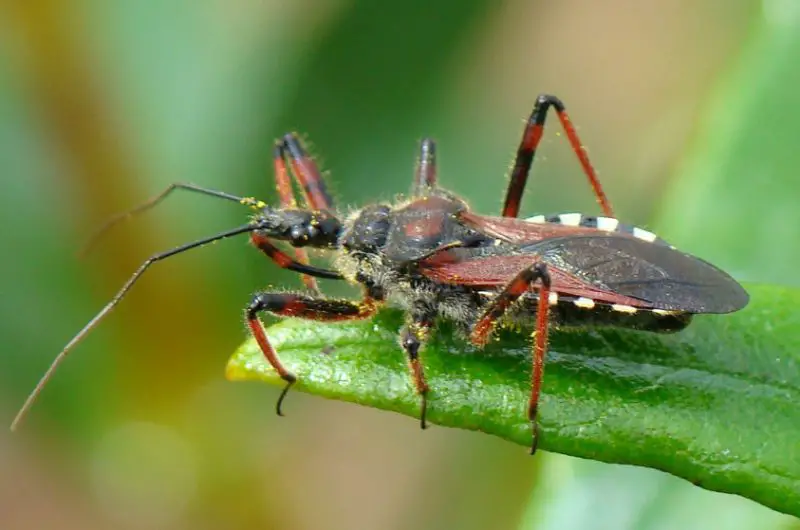
Assassin Bugs are members of the Reduviidae family, known for their stealthy predatory behavior and piercing mouthparts. They vary in size, typically between 0.5 and 1 inch (1.2–2.5 cm), and come in many colors ranging from brown and black to orange and red. These insects have narrow heads, long legs, and a distinctive curved beak used to inject venom into their prey. In Nevada, they inhabit gardens, forests, and desert scrublands where insects are abundant.
They are highly skilled hunters that ambush other arthropods, injecting them with digestive enzymes that liquefy internal tissues, which they then suck out. While beneficial in controlling pest populations, some species—like the “kissing bug” (Triatoma spp.)—can pose health risks by transmitting the parasite Trypanosoma cruzi, which causes Chagas disease. However, such cases are rare in Nevada.
Assassin Bugs can bite humans if handled carelessly or trapped against the skin. The bite is extremely painful and may cause swelling, numbness, and redness lasting several days. In some individuals, the area may blister or become infected. Unlike stings, bites involve puncturing skin with a sharp beak rather than injecting venom through a stinger.
These insects are widespread throughout Nevada, particularly in rural and semi-arid regions. They hide under debris, in cracks, or among vegetation during the day. Although generally beneficial, avoiding direct handling and sealing home entry points can prevent unwanted encounters with these predatory yet fascinating bugs.
Blister Beetle (Epicauta spp.)
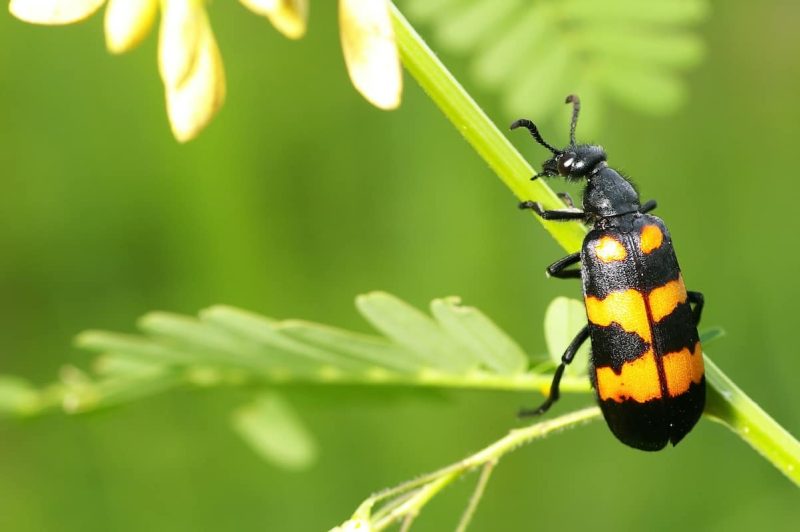
Blister Beetles are slender, soft-bodied insects commonly found across Nevada’s grasslands, agricultural fields, and desert regions. Adults are typically 0.5 to 1 inch (1.2–2.5 cm) long, with elongated bodies and flexible wing covers that can appear gray, black, or striped depending on the species. They are most active during warm months and are often seen feeding on flowering plants such as alfalfa, clover, and goldenrod.
Their name comes from the potent chemical cantharidin, which they excrete as a defense mechanism. This substance can cause severe skin irritation and blistering upon contact. Even brushing against a Blister Beetle accidentally can result in painful blisters that take days to heal. The toxin is also highly dangerous if ingested—both to humans and livestock—making these beetles a major agricultural concern. Horses, in particular, can die from eating hay contaminated with crushed beetles.
Blister Beetles lead a dual life: while adults are plant feeders, their larvae are parasitic, feeding on grasshopper eggs and helping control pest populations. However, the adult beetles’ destructive feeding and chemical defense overshadow their beneficial side. They are most abundant in late summer when wildflowers bloom and temperatures peak.
Because of their toxicity, handling Blister Beetles should always be avoided. Wearing gloves when working in fields and inspecting hay before feeding it to animals are essential precautions. In Nevada’s arid climate, they are more frequently encountered during dry summers following wet spring conditions.
Wheel Bug (Arilus cristatus)
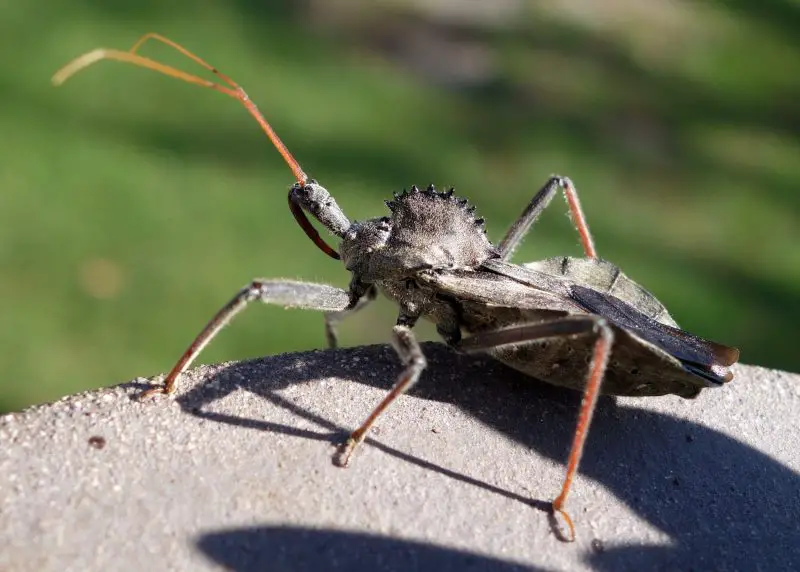
The Wheel Bug is one of the largest and most distinctive assassin bugs in North America, easily identified by the spiky, cog-like crest on its thorax resembling a gear wheel. Adult Wheel Bugs can reach lengths of up to 1.5 inches (3.8 cm) and are gray or brown, with long legs and a curved, piercing beak. Their intimidating appearance and slow, deliberate movements make them a memorable sight in Nevada gardens and woodlands.
These bugs are predatory and feed on other insects such as caterpillars, beetles, and aphids. They ambush or chase their prey and use their beak to inject a powerful digestive enzyme that liquefies internal tissues. While beneficial for pest control, their defensive bite is extremely painful—often described as worse than a bee sting—and can cause swelling, numbness, and blistering at the site. The pain may persist for several days.
Wheel Bugs are solitary and non-aggressive, biting humans only when mishandled. They spend most of their time in trees, shrubs, and garden plants where prey is abundant. Females lay clusters of eggs in late summer, which hatch the following spring. Both nymphs and adults are active hunters and contribute to maintaining ecological balance by preying on harmful insects.
In Nevada, Wheel Bugs are found in wooded and semi-arid areas where vegetation offers cover and insect prey. Gardeners should handle them with care or not at all—despite their fearsome defense, these insects are valuable allies in controlling pest populations naturally.
Deer Tick (Ixodes scapularis)

The Deer Tick, also known as the Black-Legged Tick, is a small arachnid that poses a significant health threat in the United States, though it is less common in Nevada’s arid regions. Adult females are about 0.1 inch (3 mm) long, with reddish-brown bodies and dark legs, while males are smaller and darker. After feeding on blood, their bodies swell to several times their original size, turning grayish.
These ticks are notorious for transmitting Lyme disease, caused by the bacterium Borrelia burgdorferi, as well as other infections such as anaplasmosis and babesiosis. The tick’s bite itself is painless, allowing it to remain attached to its host unnoticed for several days while feeding. Once infected, humans may develop flu-like symptoms, fatigue, fever, and a distinctive “bull’s-eye” rash that requires medical treatment with antibiotics.
Deer Ticks thrive in humid, wooded, and grassy environments. In Nevada, they are most often encountered in cooler, mountainous areas where vegetation retains moisture, such as along streams or shaded trails. They attach to a wide variety of hosts, including deer, rodents, pets, and humans.
Prevention is the best defense against tick-borne diseases. Wearing long sleeves, using insect repellent containing DEET, and checking skin and clothing after outdoor activities can significantly reduce the risk of bites. Prompt removal of ticks with fine-tipped tweezers is crucial to prevent disease transmission.
Lone Star Tick (Amblyomma americanum)
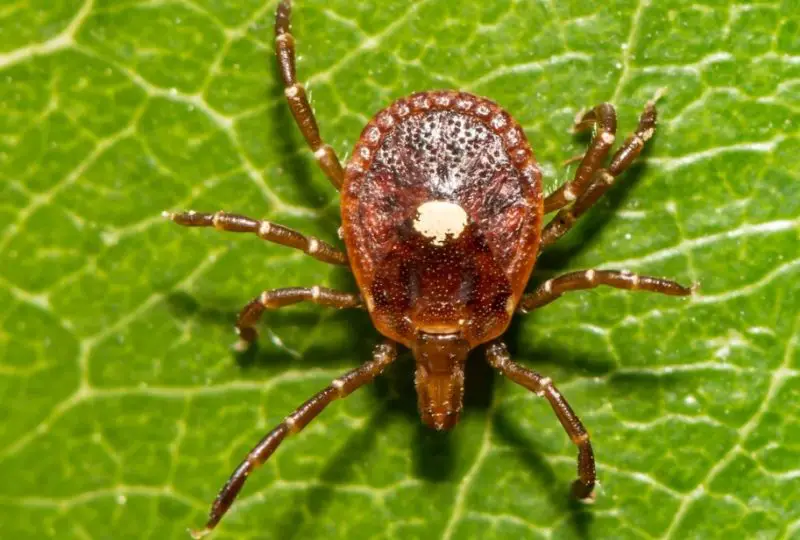
The Lone Star Tick is easily identifiable by the white, star-shaped spot on the back of adult females. Males lack this mark but display scattered white flecks on their dark reddish-brown bodies. Adults are about 0.2 to 0.3 inches (5–8 mm) long before feeding but can swell dramatically after a blood meal. While native to the southeastern United States, they have expanded westward, occasionally appearing in Nevada’s more humid or wooded habitats.
This tick species is infamous for transmitting several diseases, including ehrlichiosis, tularemia, and the so-called “alpha-gal allergy.” The latter condition can cause affected individuals to develop an allergic reaction to red meat after being bitten. Symptoms may appear hours after eating beef, pork, or lamb, making diagnosis difficult.
Lone Star Ticks are aggressive and will actively seek hosts by crawling toward carbon dioxide and heat sources. They feed on a wide range of mammals, birds, and humans, often biting multiple times. Although their bite is not initially painful, it can result in swelling, itching, and prolonged redness. Some bites may become infected if scratched.
These ticks prefer shaded areas with dense undergrowth, tall grass, and leaf litter. In Nevada, they may be found near riparian zones or forested regions with sufficient humidity. To avoid contact, hikers and campers should stay on cleared trails, apply repellents, and inspect clothing and skin regularly after outdoor activities.
American Dog Tick (Dermacentor variabilis)
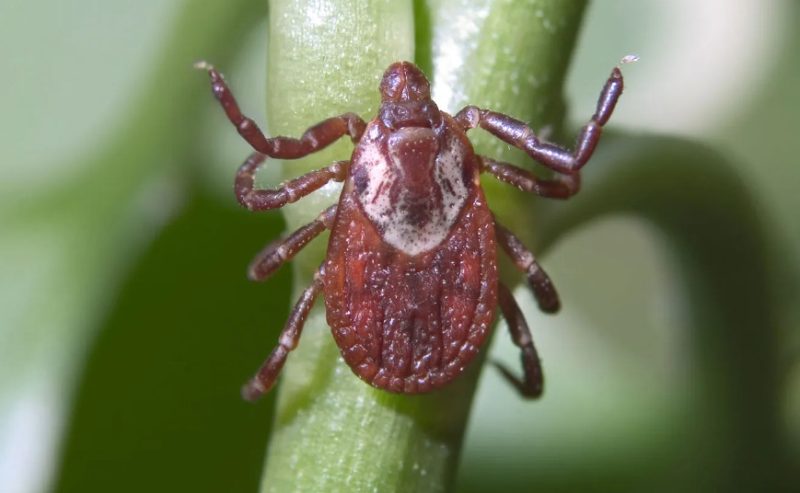
The American Dog Tick is a widespread tick species in North America, recognized by its brown body patterned with gray or white markings on its back. Adult females measure about 0.2 inches (5 mm) unfed and can expand to more than 0.6 inches (1.5 cm) when engorged. Males are smaller and more ornate but do not swell as dramatically. In Nevada, they are found mainly in grassy fields, meadows, and areas frequented by wild or domestic animals.
These ticks are known vectors of Rocky Mountain spotted fever and tularemia, both serious bacterial infections. The bite itself is painless, allowing the tick to feed unnoticed for several days. Symptoms of infection can include fever, rash, muscle aches, and fatigue—requiring immediate medical care. While the risk of disease transmission is lower in Nevada’s arid climate, it remains possible in areas where animal hosts are abundant.
American Dog Ticks primarily target mammals such as dogs, coyotes, and raccoons, but humans can also become accidental hosts. They are most active during spring and early summer when temperatures and humidity levels are favorable for questing behavior—when ticks climb vegetation and wait for passing hosts.
To minimize risk, pet owners in Nevada should use veterinarian-approved tick preventatives and regularly check their animals after walks. For humans, wearing protective clothing, avoiding tall grass, and promptly removing attached ticks are key preventive measures. Though small, these ticks can pose significant health threats if ignored.
Mosquito (Culex and Aedes species)
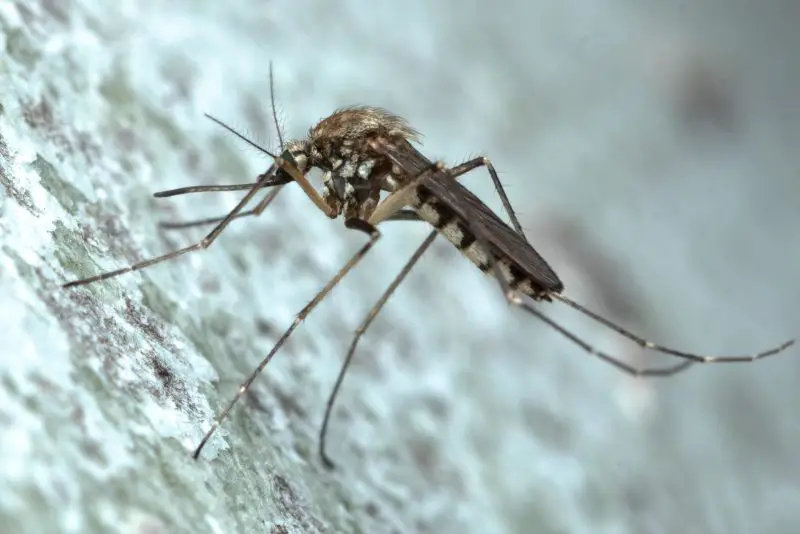
Mosquitoes are among the most common and troublesome insects in Nevada, especially during warm months. The most prevalent species belong to the Culex and Aedes genera. Adult mosquitoes are small, slender insects about 0.15 inches (4 mm) long with long legs and a proboscis designed for piercing skin and sucking blood. Females require blood meals to develop eggs, while males feed exclusively on plant nectar.
Culex mosquitoes are best known for transmitting West Nile virus, while Aedes mosquitoes, such as Aedes aegypti, are capable of spreading Zika virus, dengue fever, and Eastern equine encephalitis. These diseases are rare in Nevada but possible during warm, wet summers when standing water provides ideal breeding sites. Female mosquitoes lay eggs in water sources ranging from ponds and ditches to birdbaths and buckets.
Mosquito bites cause itchy, red welts due to an allergic reaction to the insect’s saliva. Scratching can lead to secondary infections, particularly in children or those with sensitive skin. Large swarms are most active at dawn and dusk, especially near stagnant water.
To reduce risk, residents should eliminate standing water around homes, use insect repellents containing DEET or picaridin, and install window screens. Nevada’s dry climate limits mosquito populations compared to humid states, but irrigation systems and urban water sources can still support localized outbreaks.
Kissing Bug (Triatoma sanguisuga)

The Kissing Bug, a member of the assassin bug family, is a blood-feeding insect that has earned notoriety for its potential to transmit Trypanosoma cruzi, the parasite responsible for Chagas disease. Adults are about 0.75 to 1.25 inches (2–3 cm) long with elongated, flat bodies, cone-shaped heads, and orange or red bands along the edges of their dark wings. In Nevada, they are occasionally found near rodent nests, woodpiles, or outdoor lighting.
These bugs typically feed at night, attracted to the carbon dioxide and body heat of sleeping animals and humans. Their name comes from their habit of biting around the mouth or eyes. The bite itself is painless, but an allergic reaction can occur, resulting in redness, itching, and swelling. The real danger arises when the insect’s feces—containing the T. cruzi parasite—enter the bite wound or mucous membranes through scratching.
Chagas disease is rare in the United States, but sporadic cases have been reported. Symptoms include fever, fatigue, and swelling near the bite site in the early stages. Chronic infection can lead to severe heart and digestive problems years later.
Kissing Bugs prefer warm, dry environments, making parts of southern Nevada suitable habitats. To prevent infestations, residents should seal cracks in walls, use screens on windows, and avoid sleeping near outdoor lighting that attracts these nocturnal insects.
Black Horsefly (Tabanus atratus)

The Black Horsefly is one of Nevada’s largest and most aggressive blood-feeding flies. Females can reach up to 1 inch (2.5 cm) in length and are entirely black with iridescent wings and large, green or purple compound eyes. Males do not bite, feeding only on nectar, while females require blood to produce eggs. These flies are typically active in late spring and summer, particularly near water sources such as lakes, rivers, and marshy areas.
Horseflies use knife-like mouthparts to slice through the skin, creating a shallow wound from which they lap up blood. Their bites are extremely painful, often leaving swollen welts that may last for days. Because they feed on multiple hosts in succession, horseflies can transmit bacteria and blood-borne pathogens between animals and occasionally to humans.
Despite their size, Horseflies are fast and persistent, making them difficult to swat or repel. They are attracted to movement, dark colors, and carbon dioxide, often targeting livestock, pets, and outdoor workers. Males are less noticeable, usually hovering near flowers or vegetation.
In Nevada, Horseflies are most common in wetter regions near irrigation sites or along river corridors. Wearing light-colored clothing, using repellents, and avoiding outdoor activity near water at midday—when these flies are most active—can help reduce bites.
Chiggers (Trombiculidae family)
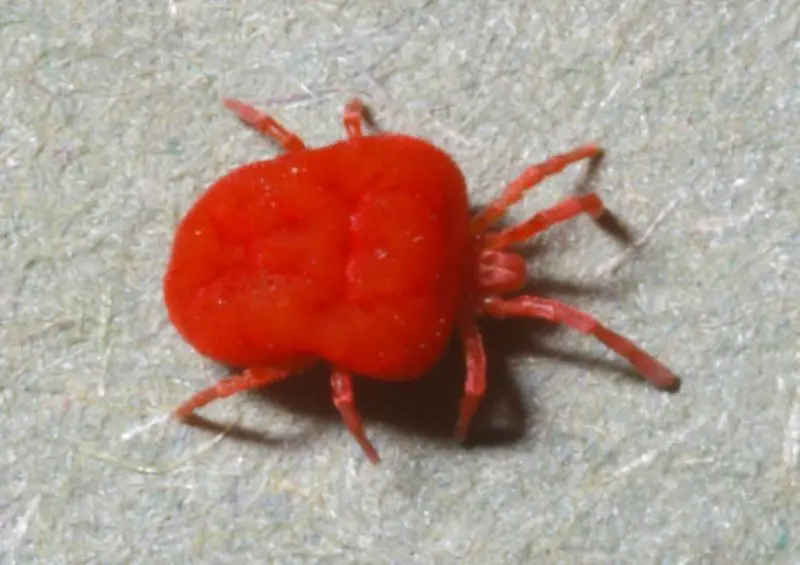
Chiggers, or harvest mites, are microscopic red or orange arachnids that belong to the Trombiculidae family. Adults are harmless soil-dwelling mites, but their larvae are parasitic and feed on the skin cells of mammals, birds, and humans. These larvae are barely visible to the naked eye, measuring only 0.01 inches (0.25 mm) long, yet they can cause intense irritation and itching.
Chiggers do not burrow into the skin as commonly believed. Instead, they inject digestive enzymes that break down skin tissue, which they then consume. This causes red welts and severe itching that can last for a week or more. Bites are typically clustered around tight clothing areas such as the ankles, waist, or behind the knees.
They are most active in warm, humid weather, inhabiting grassy fields, wooded edges, and areas with thick vegetation. In Nevada, they appear near riparian zones and irrigated gardens rather than the dry desert interior. Their presence often goes unnoticed until after itching begins hours later.
To prevent bites, wear long clothing, tuck pants into socks, and apply insect repellent to skin and clothing. Showering immediately after outdoor activity can remove larvae before they attach. Over-the-counter creams and antihistamines help soothe irritation from bites.
Yellow Fly (Diachlorus ferrugatus)
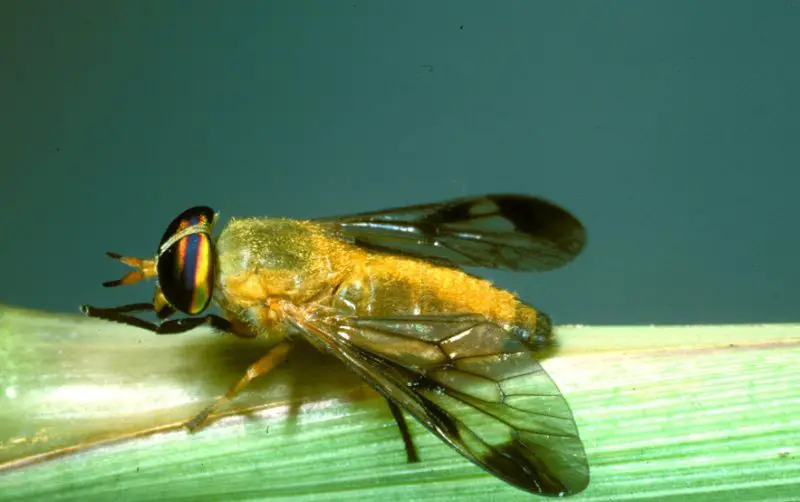
The Yellow Fly is a medium-sized biting fly known for its painful attacks and aggressive behavior. Measuring about 0.25 inches (6–7 mm) long, it has a yellowish-brown body, bright green eyes, and clear wings. It is closely related to deer flies and horseflies, sharing their slicing mouthparts that inflict painful wounds. While more abundant in the southeastern U.S., Yellow Flies can also be found in southern Nevada, especially near streams, marshes, and shaded woodland areas.
Female Yellow Flies feed on blood to produce eggs, preferring mammals such as deer, livestock, and humans. Their bites cause immediate pain, followed by swelling and itching that may persist for days. Repeated bites can lead to secondary infections or allergic reactions in sensitive individuals. Males, on the other hand, feed on nectar and pollen.
These flies are most active during daylight hours, particularly in humid and shaded locations. They are highly visual hunters attracted to movement and dark clothing, often swarming around the head and shoulders of their victims.
In Nevada, Yellow Flies are seasonal pests appearing during late spring and early summer. Because repellents are often ineffective, the best prevention is physical protection—wearing light-colored clothing, avoiding shaded streams during peak activity, and using fans or netting to deter them when outdoors.
Spider Wasp (Pompilidae family)
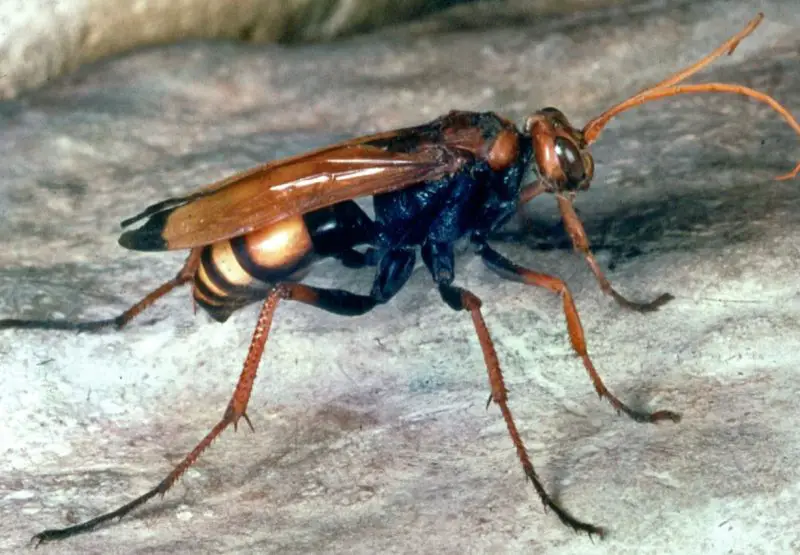
Spider Wasps are large, solitary wasps known for their glossy black or metallic blue bodies and orange-tinted wings. They range from 0.5 to 2 inches (1.2–5 cm) long, depending on the species, and are common in Nevada’s arid regions. Despite their beauty, these wasps deliver one of the most painful stings in the insect world.
Female Spider Wasps paralyze spiders with their venom and drag them to underground burrows as food for their larvae. The most famous member of this family is the Tarantula Hawk Wasp, whose sting ranks near the top of the Schmidt Pain Index—a scale measuring sting intensity. While the pain is excruciating, it usually subsides within minutes and is not medically dangerous unless allergic reactions occur.
Spider Wasps are solitary hunters that are rarely aggressive toward humans unless provoked. They are often seen flying low over the ground in search of prey or feeding on flower nectar. Males, which cannot sting, are territorial and hover near flowers or burrow entrances.
In Nevada, they are common in deserts, grasslands, and open scrub areas. Although they can be alarming due to their size and buzz, they are beneficial predators that help control spider populations. Observing them from a safe distance is the best way to appreciate their ecological role.
Puss Caterpillar (Megalopyge opercularis)

The Puss Caterpillar, also known as the Southern Flannel Moth Caterpillar, is one of the most venomous caterpillars in the United States — and although it’s more common in the Southeast, it has been occasionally spotted in southern parts of Nevada, especially during warmer months when moths migrate or are transported on ornamental plants.
This caterpillar looks soft and harmless, covered in thick, silky hairs that resemble fur. However, beneath those hairs lie venomous spines capable of delivering an excruciating sting. Contact with the caterpillar’s spines can cause sharp, burning pain, swelling, redness, and sometimes nausea or numbness that radiates through the limb. In rare cases, people have reported dizziness or chest discomfort requiring medical care.
In southern Nevada, Puss Caterpillars may appear on oak, citrus, or ornamental shade trees, particularly in landscaped gardens or suburban neighborhoods. Because of their deceptively fuzzy appearance, they are sometimes picked up by children or brushed against accidentally. If encountered, it’s best to avoid direct contact, wear gloves when gardening, and monitor trees regularly during late summer and early fall when caterpillar activity peaks.
Tips for Avoiding Dangerous Bugs in Nevada
1. Eliminate Standing Water
Mosquitoes and other biting insects breed in stagnant water. Regularly empty containers such as birdbaths, plant saucers, and buckets. Clean gutters frequently and ensure proper drainage around your home to keep mosquito populations low.
2. Seal Entry Points
Many bugs—including Kissing Bugs, spiders, and termites—enter homes through cracks and gaps. Seal windows, door frames, foundation openings, and utility lines. Use screens on windows and doors to keep insects from flying or crawling inside.
3. Wear Protective Clothing
When hiking, camping, or working outdoors, wear long sleeves, pants, and closed shoes. Light-colored clothing is less attractive to biting insects like horseflies and yellow flies. Tucking pant legs into socks can also prevent tick bites.
4. Use Insect Repellents
Apply EPA-approved repellents containing DEET, picaridin, or oil of lemon eucalyptus to exposed skin. For added protection, treat clothing and gear with permethrin-based sprays, which repel ticks and mosquitoes effectively.
5. Keep Outdoor Areas Clean
Wasps, hornets, and ants are drawn to food scraps, open garbage, and sugary drinks. Clean up spills, keep trash cans sealed, and store pet food indoors. Avoid wearing perfumes or scented lotions that attract stinging insects.
6. Check for Ticks After Outdoor Activities
Ticks can latch onto skin and remain unnoticed for hours. After spending time outdoors, check your body thoroughly—especially around the scalp, armpits, and behind the knees. Remove ticks promptly with fine-tipped tweezers.
7. Avoid Disturbing Nests and Colonies
Paper Wasps, hornets, and Fire Ants can become dangerously aggressive if their nests or mounds are disturbed. Keep a safe distance and contact pest control professionals for removal instead of attempting it yourself.
8. Store Firewood and Debris Away from the House
Scorpions, spiders, and termites often hide in woodpiles and debris. Keep firewood at least 20 feet from your home and elevated above the ground. Inspect logs before bringing them indoors.
9. Maintain Good Yard Hygiene
Trim overgrown vegetation, mow grass regularly, and clear leaf litter. Many biting and stinging insects thrive in dense, shady, or cluttered areas. A tidy yard discourages their presence.
10. Learn to Identify Dangerous Species
Familiarize yourself with the appearance of harmful bugs like Black Widows, Brown Recluses, and Velvet Ants. Knowing what to look for can help you avoid contact and respond quickly if stung or bitten.
FAQs About Dangerous Bugs in Nevada
What is the most dangerous bug in Nevada?
The Black Widow Spider is considered the most dangerous due to its potent neurotoxic venom, which affects the nervous system. Though rarely fatal, its bite can cause intense pain, muscle cramps, and nausea requiring medical treatment.
Are Velvet Ants really capable of killing cows?
No, despite the nickname “cow killer ant,” Velvet Ants do not kill cows. The name comes from the extreme pain of their sting, which is among the most painful of any insect in North America.
Do all mosquitoes in Nevada carry diseases?
No. While mosquitoes like Culex tarsalis can transmit West Nile virus, not all species are infected. However, precautions should always be taken to prevent bites, especially during summer and after heavy rains.
How can I tell if a spider bite is serious?
If the bite site shows spreading redness, severe pain, blistering, or tissue breakdown—or if you develop fever, chills, or muscle cramps—seek medical care immediately. Such symptoms may indicate bites from venomous spiders like the Brown Recluse or Black Widow.
Are scorpions in Nevada deadly?
Most scorpion stings in Nevada, including those from the Southern Devil Scorpion, are not lethal. They cause localized pain similar to a bee sting. However, allergic individuals or small children should always be monitored after a sting.
Can ticks survive in Nevada’s dry climate?
Ticks prefer humid environments, but they can survive in Nevada’s mountainous and riparian areas where moisture levels are higher. These areas provide shade and animal hosts, allowing species like the American Dog Tick to thrive.
What should I do if bitten by a Kissing Bug?
Wash the bite area with soap and water and avoid scratching. Monitor for allergic reactions or flu-like symptoms. While Chagas disease is rare in Nevada, any unusual swelling or rash should be checked by a doctor.
Do termites in Nevada bite humans?
Termite Soldiers can bite defensively when handled, but their bites are not venomous and pose no health risk. The main threat from termites comes from structural damage to wooden buildings, not direct bites.
Why are Spider Wasps so feared?
Spider Wasps, especially Tarantula Hawks, deliver excruciatingly painful stings, ranking near the top of the Schmidt Pain Index. However, they are solitary and rarely sting humans unless provoked.
How do I safely remove a tick?
Use fine-tipped tweezers to grasp the tick as close to the skin as possible and pull upward steadily without twisting. Clean the area with alcohol or soap and water afterward. Avoid crushing the tick with your fingers.

